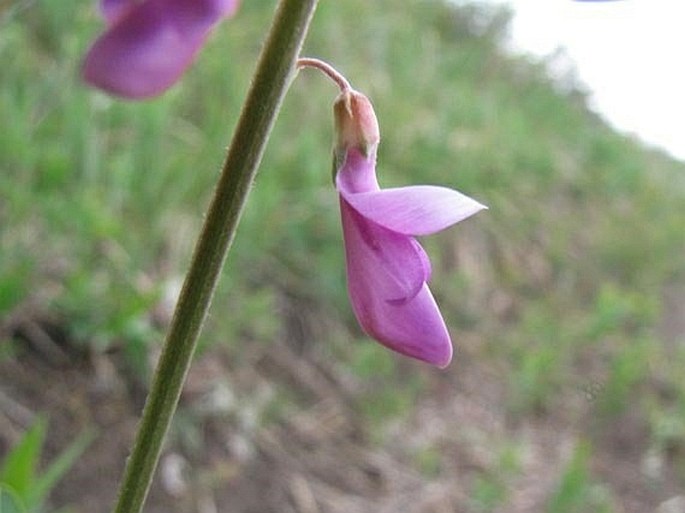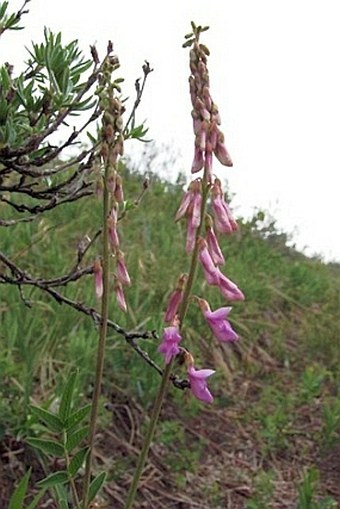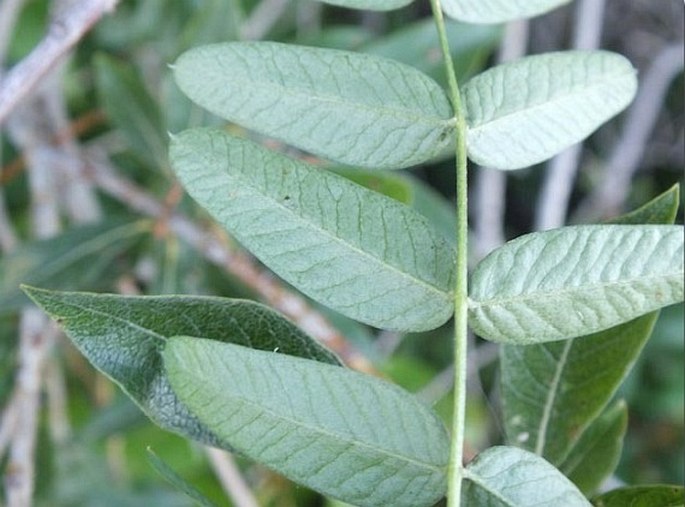Syn.: Echinolobium alpinum (L.) Desv., Hedysarum alpinum f. albiflorum (Standl.) Fernald, Hedysarum alpinum var. americanum Pursh, Hedysarum alpinum var. chinense B. Fedtsch., Hedysarum americanum (Michx.) Britton, Hedysarum chinense (B. Fedtsch.) Hand.-Mazz., Hedysarum elongatum Basiner, Hedysarum philoscia A. Nelson, Hedysarum sibiricum sensu Ledeb.
Family: Fabaceae Lindl.

Distribution: Circumpolar species. One part of the botanical literature divides this species in two varieties. The nominate variety is found in the north of European Russia, Siberia, Kazachstan, Mongolia, Chinese Manchuria, Korea and even in Kashmir. Variety H. a. var. americanum grows in North America from Alaska and Yukon, across of all Canada to eastern Quebec and north of US as far as north Wyoming. The other part of the literature recognizes 2 separate taxa and then Hedysarum americanum would be crossing Bering Strait into northeast Russia. This species definitely needs more study to settle the contention.
Ecology: Grows in forests of taiga, wet meadows, rocky slopes and shrubbery. Blooms from June to August.

Description: Perennial herb, 50–100 cm tall with erect stem; leaves 8–12 cm long divided into 9–21 leaflets, narrowly elliptic to lanceolate, 15–30 × 5–7 mm, hairy on top, hairless underneath. Loose raceme grows on a long stalk from leaf axils, calyx bell-shaped, 3–5 mm long, tips irregular; corolla is pink to reddish purple, 9–12 mm long, the keel longer than wings (as all Hedysarum). Fruit is a loment (segmented legume with a seed in each segment), 2–5 segments, 4–8 mm long each, 3–5 mm wide, hairless.
Threat and protection: Hedysarum americanum is listed in The Red Book of Russia. In US, it is endangered in states of Maine and Michigan.
Note: The genus Hedysarum contains about 160 species found in Europe, north Africa, Asia and North America.




These images were taken in Canada, Alberta, Calgary, Nose Hill Park (summer 2013).


